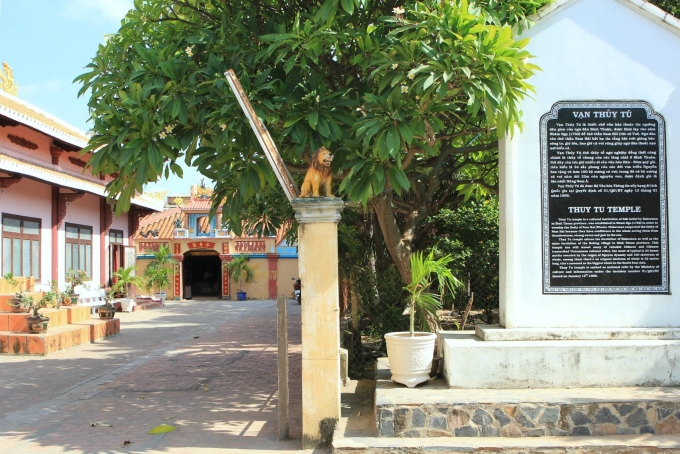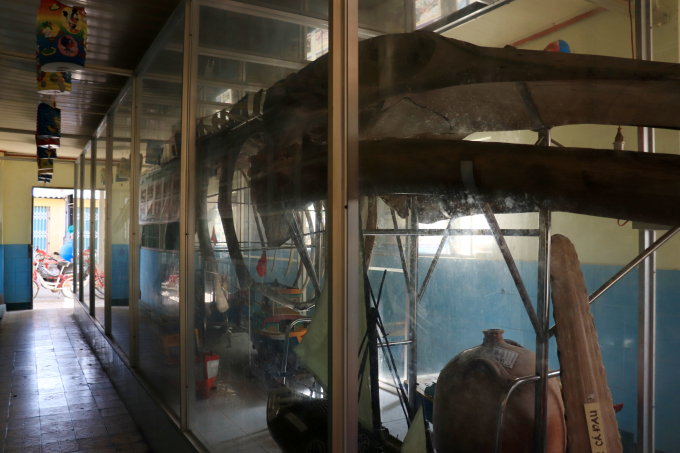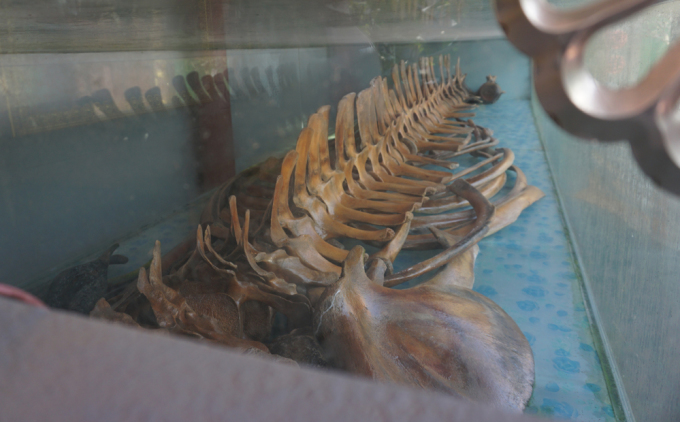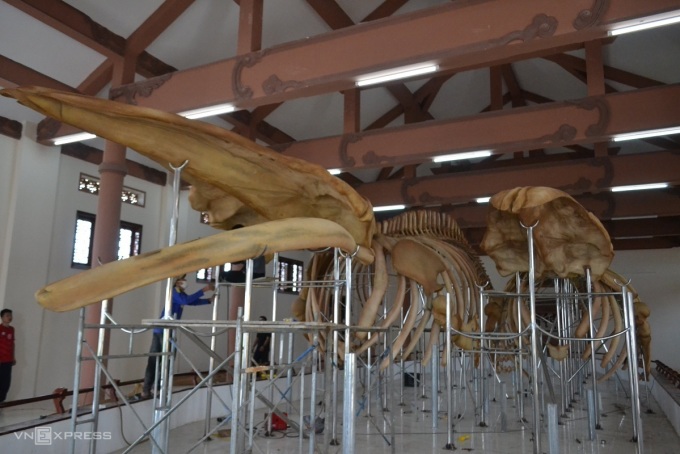Giant whale skeletons restored on Lý Sơn Island
Two giant whale skeletons have been restored on Lý Sơn Island, central Quảng Ngãi Province.
The large whales in trouble at sea, when washed ashore, are picked up by fishermen, and the skeletons are worshiped and preserved.
Whales are animals that are respected by Vietnamese fishermen, in many places as gods and worshipers, called Ca Ong. The appearance of blue whales in the sea of Binh Dinh has attracted many people’s attention. If you are interested in learning about this animal and how it affects the culture of many regions, you can refer to the points below.
Palace of Van Thuy Tu
The palace was established in 1762, formerly located close to the sea, facing the East Sea, is the place to worship the ancestors of the sea craft of Binh Thuan fishermen. According to the beliefs of the sea people, the Ca Ong (whale) often protects fishermen during the months of floating in the sea, so they are grateful and worshiped.
Currently, the province has 29 mausoleums dedicated to Ong fish. Dinh Van Thuy Tu is best known for having a 22 m long fish skeleton, which once set a Southeast Asian record. The area between the palace also holds more than 100 whale skeletons, including those dating from 100 to 150 years.
The palace is open from 7 a.m. to 5 p.m., and closes at noon. Ticket price to visit is 15,000 VND per adult, 7,000 VND for children.
Address: 54 Ngu Ong, Phan Thiet city, Binh Thuan.
Tomb of Ong Thuy General
Tomb of Ong Thuy General in Can Gio, Ho Chi Minh City worships a 12-meter-long Ca Ong skeleton to pay tribute to the fish that saved people at sea. Inside, there is a separate room with the skeleton of Ca Ong, restored by the Ho Chi Minh City Museum in 2001, preserved in a glass cabinet. Ong fish (died) in 1971, was brought ashore by villagers to worship. Legend has it that the fish has a deep concave back like a boat to help lift ships in distress to shore.
The mausoleum welcomes many tourists from all over the world to visit and worship, the most crowded on weekends. On the full moon of August every year, the Can Gio district organizes the traditional festival “Nhung Ong” to honor Ca Ong and the gods. The main day of the festival is from the 14th to the 17th of the 8th lunar month.
Address: Duyen Hai, Can Gio, HCMC
Temple of Mr. Nam Hai Da Loc
In Hung Thanh beach village, Da Loc commune, Hau Loc district (Thanh Hoa) there is a temple that is considered sacred by the locals. Temple of giant whale skeleton. The fish shell is like a large fan, with two people carrying it. According to legend, the fish body weighs more than 50 tons, the skeleton is about 20 meters long, as big as a two-story house washed up on the beach of Da Loc.
The belief of worshiping Ca Ong of coastal residents in Hau Loc district has a long history, occupying a special position in the spiritual and religious life of the fishing community here. They call the whale “Sir” or “God of the South Sea”. Every January, the villagers organize the Cau Ngu festival.
Canh Duong villagers in Quang Binh keep two whale skeletons of the largest size in Vietnam, about 200 years old. Fish bones are placed in the village shrine, consisting of two sets, placed on wooden stalls on both sides, in the middle are incense bowls worshiping Notre Dame. Four bow-shaped bones, placed against the wall, 4-5 m high, almost touching the roof, are the jawbones of Ca Ong, Ca Ba.
On the full moon day of January every year, Canh Duong villagers hold a ceremony to pray for fish, honor Ca Ong, Ca Ba, pray for fishermen to sail smoothly and have a bountiful year.
Address: Canh Duong Village, Quang Trach, Quang Binh
Tomb of Tan relic
Ly Son has 7 Ca Ong mausoleums, each of which worships dozens of skeletons, also known as “jewel bones”, dating from a few dozen years to more than 300 years old. The two skeletons in the Mausoleum Tan relic are recognized as the largest in Vietnam, conferred the title of Dong Dinh Dai Vuong and Duc Ngu two deities. They are 300 years old so 40% damaged, but were successfully restored earlier this year.
Coming here, visitors can admire two skeletons 22 and 28 m long, up to nearly 4 m high, respectively. Each set has 50 vertebrae, 28 ribs nearly 10 m long.
Address: Dong Hamlet, An Vinh Commune, Ly Son Island, Quang Ngai.



